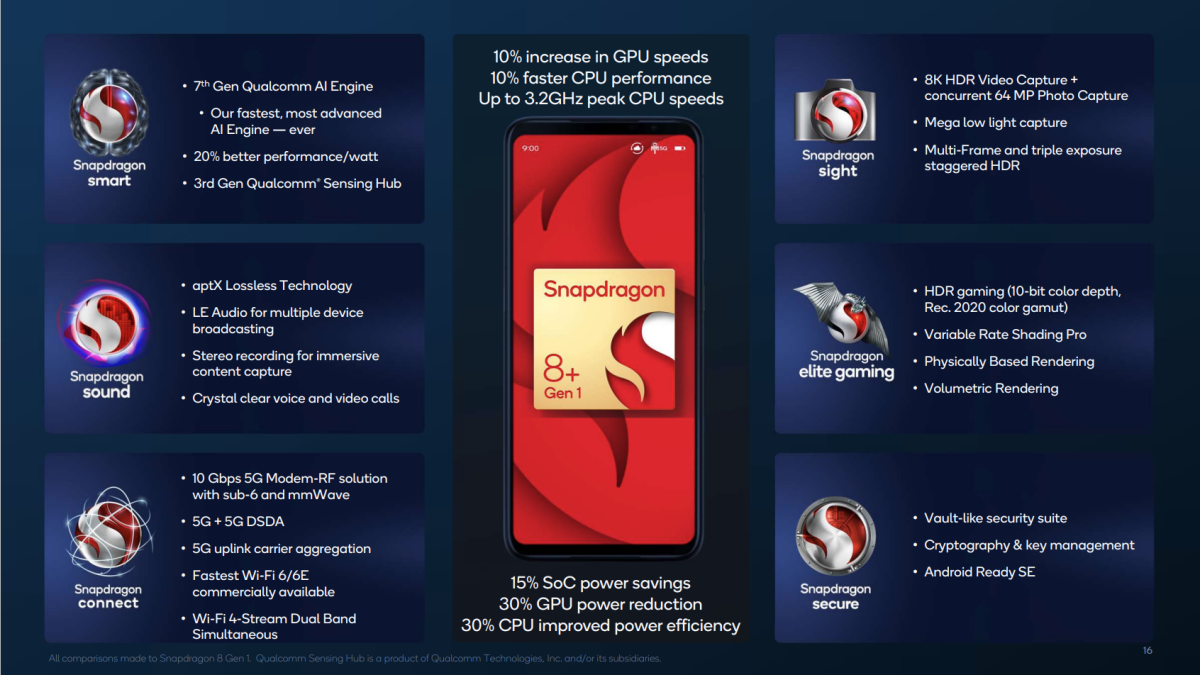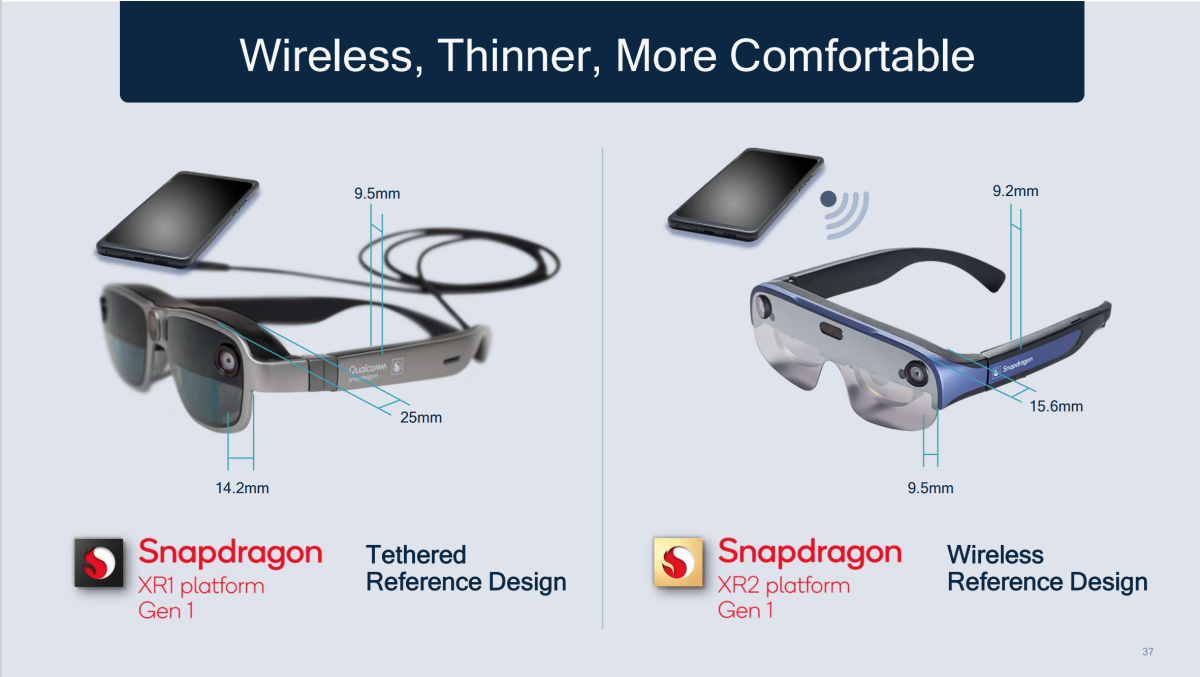Qualcomm's Snapdragon 8+ Gen 1 will power tomorrow's best Android phones
 Image: Qualcomm
Image: QualcommPremium Android smartphones will have a new Qualcomm Snapdragon processor option when they debut this fall: The Snapdragon 8+ Gen 1, which will boost GPU performance by about 10 percent while tacking on an extra hour of battery life.
Qualcomm also announced the Snapdragon 7 Gen 1, a similar upgrade to its next performance tier of Snapdragon processors.
According to Qualcomm, the new Snapdragon 8+ Gen 1 will power phones by Asus ROG, Black Shark, Honor, iQOO, Lenovo, Motorola, Nubia, OnePlus, Oppo, OSOM, Realme, RedMagic, Redmi, Vivo, Xiaomi, and ZTE when the phones debut in the third quarter. Honor, OPPO, and Xiaomi will use the Snapdragon 7 Gen 1 beginning in the second quarter.
According to Mike Roberts, the vice president of global product marketing for Qualcomm, the justification for the Snapdragon 8+ Gen 1 is a simple one: the company sees more consumers turning to premium smartphones. Premium smartphones represent 31 percent of the market today, and should increase to 35 percent in five years’ time. But Qualcomm also expects a whopping 75 percent of all smartphone revenue to come from that premium smartphone segment, priced at more than $500. Qualcomm estimates that roughly half of the $200 billion gaming market will come from mobile gaming. That’s enough for Qualcomm to sink more money into improving premium smartphones.

Qualcomm
Qualcomm
Qualcomm
That Qualcomm would launch a Snapdragon 8+ Gen 1 wasn’t really in doubt; Qualcomm has launched “Plus” versions of its Snapdragon chips before for gaming phones, such as the Snapdragon 865 Plus it announced in July of 2020. That chip used an upclocked CPU and GPU to eke out more performance, and Qualcomm has adopted the same strategy here.
Specifically, the Snapdragon 8+ Gen 1 has increased the clock speed of the prime core from 3.0GHz in the Snapdragon 8 Gen 1 to 3.2GHz inside the 8+, increasing the performance by 10 percent. Likewise, Qualcomm increased the clock speed of the GPU as well, boosting its performance by 10 percent. But Qualcomm also improved power efficiency by 30 percent on both the CPU and GPU, or 15 percent overall, according to Roberts.
Qualcomm isn’t identifying exactly where the power savings come from — the 8+ was made by TSMC, on the equivalent 4nm node as its predecessor. That will translate into an additional 80 minutes of video streaming, Roberts said, or an extra 25 minutes of a WeChat 5G call. Otherwise, the Snapdragon 8+ Gen 1 includes the same feature set as the Snapdragon 8 Gen 1.
The Snapdragon 8+ Gen 1 will be paired with the X62 5G modem as well as the FastConnect 6900 system for Wi-Fi and Bluetooth. Qualcomm will still manufacture the older Snapdragon 8 Gen 1, Roberts said.
Likewise, the Snapdragon 7 Gen 1 includes an upclocked GPU that can deliver up to 20 percent faster graphics rendering and 30 percent more AI performance compared to its predecessor, the Snapdragon 778G. But it’s also the first Snapdragon 7 series chip to include what Qualcomm calls its “triple ISP,” or the ability to capture photos from three different cameras at the same time for a total of 200Mpixels. The camera ISP also supports “deep learning face detection” for improved authentication.

Qualcomm
Qualcomm
Qualcomm
Qualcomm also showed off a wireless AR smart viewer reference design, essentially a set of “smart glasses” that will process certain augmented-reality features on the glasses itself, such as 6 degrees of freedom (6DoF) sensing and hand tracking, which it will send over a 6GHz connection to a smartphone. The phone will perform the necessary processing and then pass back the compressed rendered frames for the glasses to display on then built-in 1080p/90 lenses.
Author: Mark Hachman, Senior Editor

As PCWorld’s senior editor, Mark focuses on Microsoft news and chip technology, among other beats. He has formerly written for PCMag, BYTE, Slashdot, eWEEK, and ReadWrite.
Recent stories by Mark Hachman:
AMD gains big in desktop CPUs versus Intel in first quarter 2024No, Intel isn’t recommending baseline power profiles to fix crashing CPUsApple claims its M4 chip’s AI will obliterate PCs. Nah, not really





